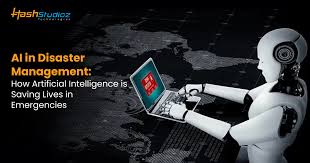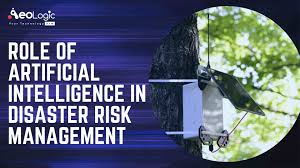
Natural disasters strike with little warning, causing widespread destruction and endangering lives. By 2025, Artificial Intelligence (AI) is playing a pivotal role in improving how we respond to and recover from these emergencies. From predicting disasters to coordinating relief efforts, AI technologies are transforming disaster management into a faster, smarter, and more effective process.
Let’s explore the growing role of AI in disaster response and relief.
1. Early Warning and Prediction
AI analyzes vast datasets—weather patterns, seismic activity, satellite imagery—to:
- Predict hurricanes, earthquakes, floods, and wildfires with greater accuracy.
- Provide timely alerts to communities at risk.
- Help governments prepare emergency resources and evacuation plans.
Early warnings save lives by giving people more time to act
2. Real-Time Disaster Monitoring
During disasters, AI-powered systems monitor evolving situations by:
- Processing drone footage and satellite images to assess damage.
- Tracking flood levels, fire spread, or aftershock risks.
- Providing situational awareness to responders and decision-makers.
This enables targeted, data-driven responses in chaotic environments.
3. Optimizing Relief Efforts
AI assists in coordinating logistics for relief operations by:
- Optimizing routes for delivering food, medicine, and supplies.
- Managing inventories and resource allocation.
- Identifying vulnerable populations who need urgent aid.
Efficient logistics reduce delays and improve aid distribution.
4. Enhancing Communication
AI-powered chatbots and virtual assistants provide:
- Real-time information and guidance to affected individuals.
- Language translation services in multicultural disaster zones.
- Support for overwhelmed emergency hotlines.
Better communication helps reduce panic and misinformation.
5. Post-Disaster Recovery
AI supports recovery efforts through:
- Damage assessment to prioritize rebuilding.
- Predictive modeling for long-term impact and resilience planning.
- Analyzing social media data to understand community needs.
This accelerates recovery and helps build disaster-resistant infrastructure.
6. Challenges and Ethical Considerations
Despite its benefits, AI in disaster response faces challenges:
- Data privacy concerns when monitoring populations.
- Ensuring AI systems are unbiased and reliable.
- The need for collaboration between technology providers and humanitarian organizations.
- Avoiding overreliance on technology without human judgment.
Ethical frameworks and transparency are essential.
Final Thoughts
AI is revolutionizing disaster response and relief by providing early warnings, real-time insights, efficient logistics, and effective communication. While challenges remain, its integration into emergency management can save lives and reduce suffering.
By harnessing AI responsibly, we can build a safer, more resilient world in the face of increasing natural disasters.
